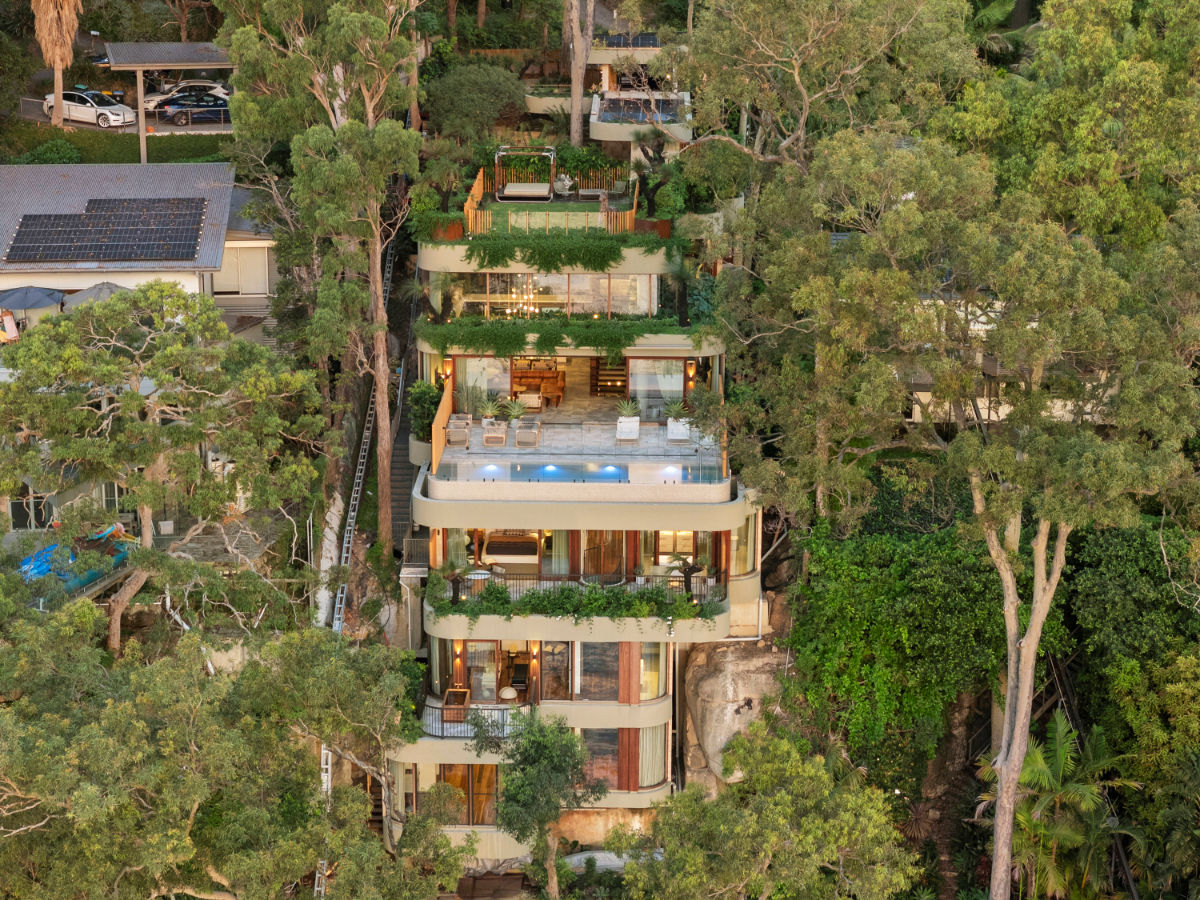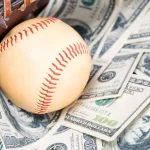A Sustainable Playground in the Sky
Picture Jamie Durie's Belah House cascading down a rugged Pittwater hillside, its seven levels weaving seamlessly into the earth like roots of an ancient tree. Completed this year after a decade of passion-fueled battles with terrain and regulations, the retreat pulses with life. Terraced gardens climb the facade, vertical greenery softens every edge, and geothermal systems hum beneath it all. Solar panels capture the sun's bounty, hydronic floors warm bare feet, and smart water retention turns rain into a resource.
Step inside, and the drama unfolds in double-height voids flooded with light, spilling into lush indoor oases. The custom chef's kitchen gleams with a barista nook for morning rituals, while a wine cellar and multiple dining spaces invite endless gatherings. Up top, a 158-square-metre rooftop lawn crowns the infinity-edge pool, framing bay views that steal your breath. A private jetty beckons for dawn swims, and wellness zones pack a gym, ice bath, sauna, and steam room into pure indulgence.
Durie poured his soul here, sourcing recycled ocean plastics and low-carbon concrete to craft something eternal. According to analysis reviewed by Finance Monthly, builds like this aren't just homes. They stand as testaments to resilience, blending luxury with a fierce commitment to the planet that leaves you inspired, almost envious of the harmony he's forged.
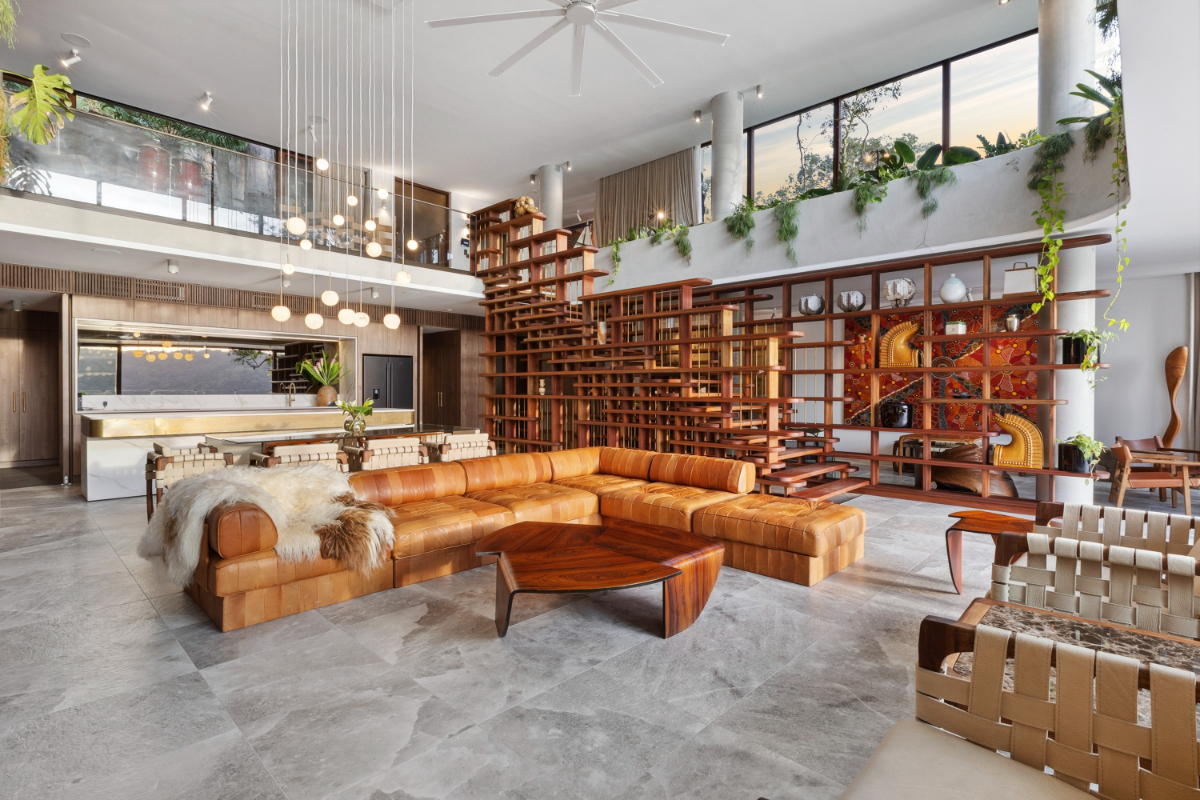
The home’s two-story great room creates a dramatic focal point, flooding the interior with natural light and emphasizing its luxurious sense of scale.
Where Architecture Meets Wealth Creation
Beneath the verdant allure lies a sharper edge, one that whispers of fortunes quietly stacking higher. Durie's retreat isn't selling square footage. It's peddling a legacy, amplified by traits that make elite properties like this magnetic in Australia's cutthroat coastal market. Scarcity reigns supreme, with off-grid waterfront gems in the northern beaches defying replication amid tightening environmental rules. Lifestyle premiums soar too, as buyers crave wellness havens that fuse privacy, sustainability, and resort vibes into daily escape.
High-net-worth crowds flock here, from tech moguls to fellow entertainers, snapping up cash deals that sidestep market jitters. And design? It turbocharges growth. According to Michael Yardney, director of Metropole Property Strategists, energy-efficient homes like Durie's command premiums of 10 to 15 percent over standard builds, driven by surging demand for green assets that promise both ethics and equity. "These properties aren't just holding value," Yardney notes in recent commentary. "They're accelerating it, turning environmental smarts into a homeowner's secret weapon against rising costs."
Durie sensed this from day one, breaking ground on a $2.3 million plot in 2015. Now, at $33 million, every curve and system compounds into a windfall that tugs at the heartstrings. It's the thrill of creation paying dividends, a quiet roar of triumph that makes you root for the underdog who dared to dream bigger.
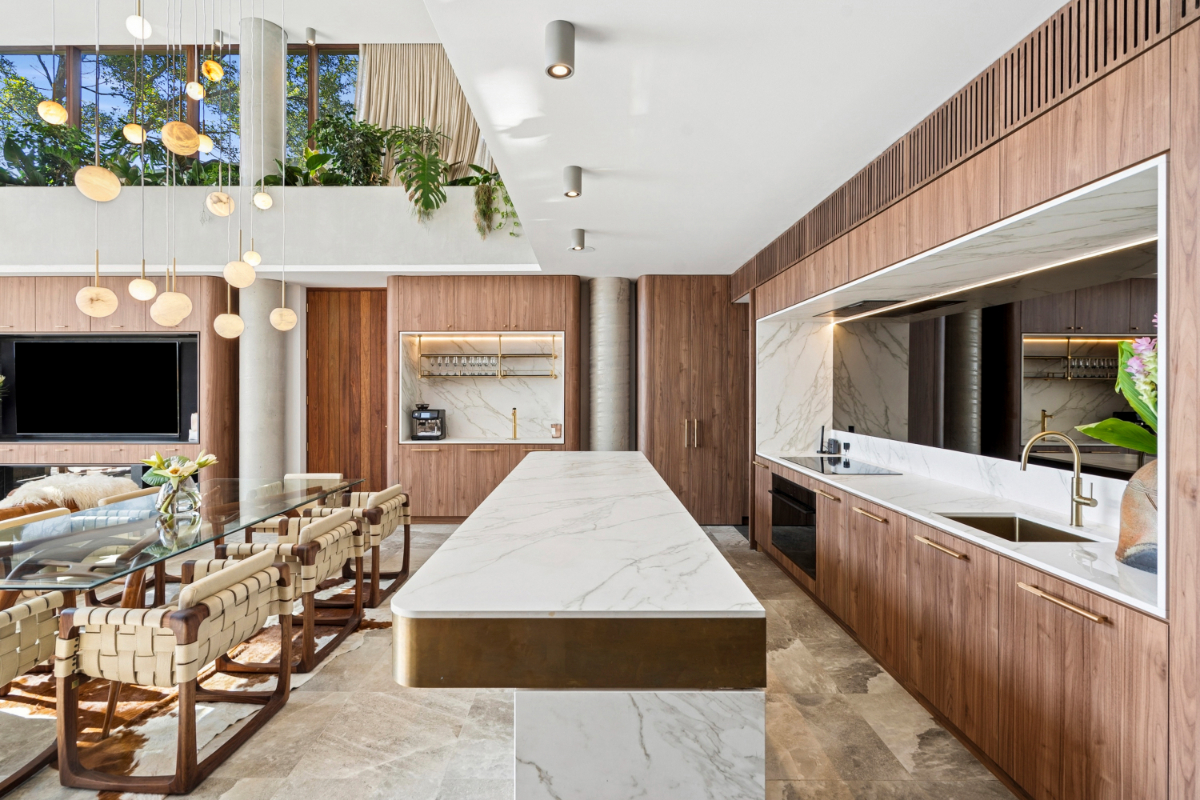
The kitchen blends luxury and functionality, anchored by a statement island and premium finishes that elevate everyday cooking into a stylish experience.
Unlocking Wealth: The Off-Grid Edge in a Volatile Energy Market
What if your home could shield your wallet from the next energy spike, while padding your future sale price? Durie's Belah House spotlights a game-changer in sustainable real estate: off-grid independence as a built-in financial fortress. In plain terms, off-grid means ditching utility bills for self-sufficiency through solar, geothermal, and water systems that generate and store your own power. No more fretting over blackouts or rate hikes that sting everyday families.
This matters deeply for you, the average homeowner eyeing long-term security. As Australia's energy costs climb 8 to 10 percent yearly amid climate shifts, off-grid setups slash those expenses by up to 90 percent, according to CoreLogic data. Imagine redirecting thousands annually to savings or kids' futures, all while your property's appeal skyrockets. Luxury eco-homes appreciated 7.81 percent faster than the broader market last year, per Mordor Intelligence forecasts, outpacing traditional builds in a nation where power bills already devour 5 percent of household budgets.
Here's the fresh insight: In 2025, savvy owners are tapping emerging green incentives, like federal rebates for battery storage that cover 30 percent of install costs, turning modest upgrades into $50,000-plus value boosts at resale. Take Sarah, a Melbourne mum who added solar and rainwater harvesting to her suburban place two years back. Her energy independence not only halved her bills but netted a 12 percent premium when she sold, per anonymized real estate records.
Your move? Audit your home's energy setup this month via a free government tool at energy.gov.au, then prioritize one upgrade like solar panels if your roof qualifies for the rebate. It's not flashy advice. It's a practical pivot that hedges against tomorrow's storms, building quiet wealth one sustainable choice at a time.
The Bottom Line: A $33 Million Lesson in Legacy Building
Jamie Durie's biophilic masterpiece stirs something profound, a mix of awe and aspiration that lingers. This isn't just a sale. It's a heartfelt pivot, freeing him to chase new horizons like his upcoming "Future House" series, where he'll dive into solutions for Australia's housing woes alongside his family. At $33 million, Belah House proves extraordinary design doesn't merely shelter a life. It forges enduring riches, blending heart, hustle, and horizon-expanding smarts into a blueprint anyone can adapt. In a world racing toward green, Durie's story reminds us wealth blooms where passion meets planet.
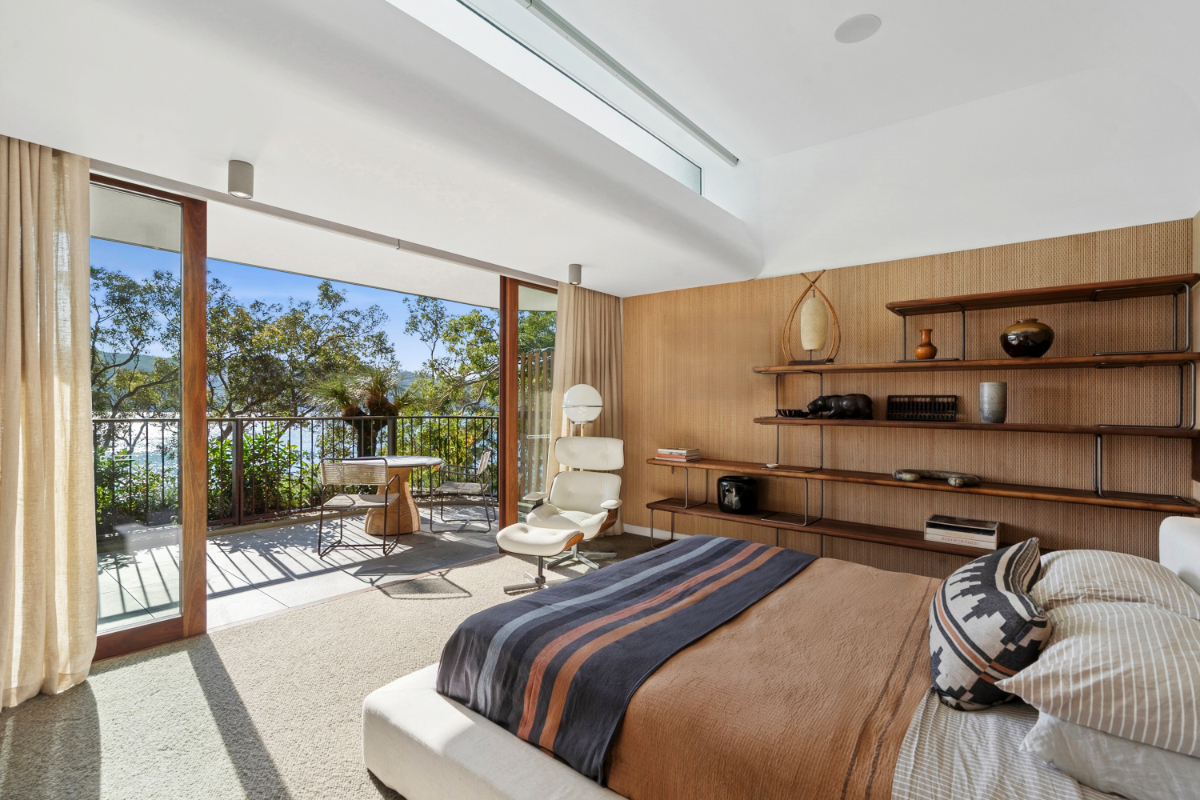
The primary bedroom offers a calm retreat, pairing modern design with warm textures and abundant natural light.
What Readers Are Asking About Jamie Durie Right Now
What is Jamie Durie's net worth in 2025?
Jamie Durie's net worth stands at an estimated $25 million USD in 2025, fueled by his multifaceted career spanning TV hosting, landscape design, and authorship. The blockbuster listing of Belah House at $33 million AUD represents a massive leap from his $2.3 million land buy in 2015, injecting over $30 million in potential gains after costs. Add earnings from shows like "Growing Home" and his thriving Durie Design firm, and you've got a portfolio radiating stability and growth that inspires everyday dreamers chasing their own big breaks.
How has Durie's latest TV project shaped his real estate moves?
Durie's fresh "Future House" series, unveiled just this week on Channel 9, spotlights innovative fixes for Australia's housing crisis, drawing his wife and kids into the spotlight for authentic family-driven insights. This timely launch amplifies Belah House's narrative as a blueprint for sustainable living, subtly elevating its market allure among eco-conscious buyers. By chronicling real-world builds, the show positions Durie as a forward-thinking icon, potentially shaving weeks off the sale while sparking viewer dreams of their own green upgrades.
Why do sustainable features drive faster appreciation in luxury homes like Durie's?
Sustainable elements in properties like Belah House, from geothermal heating to solar arrays, propel appreciation rates 10 to 15 percent above market averages by appealing to a growing cadre of values-aligned buyers. In Sydney's premium belts, where waterfront scarcity bites hard, these features hedge against energy volatility and climate risks, per expert analyses. For consumers, it's a compelling call to infuse homes with green tech, not just for the planet but for pockets that grow greener with every passing year of rising demand.



